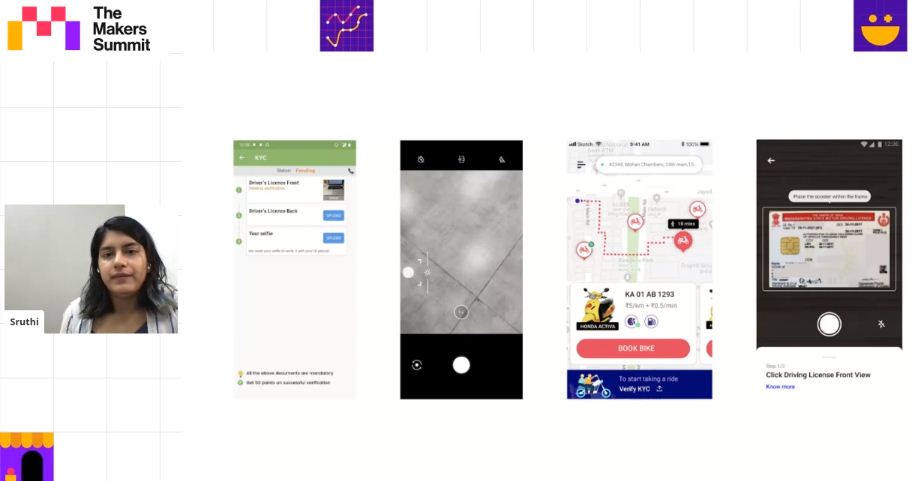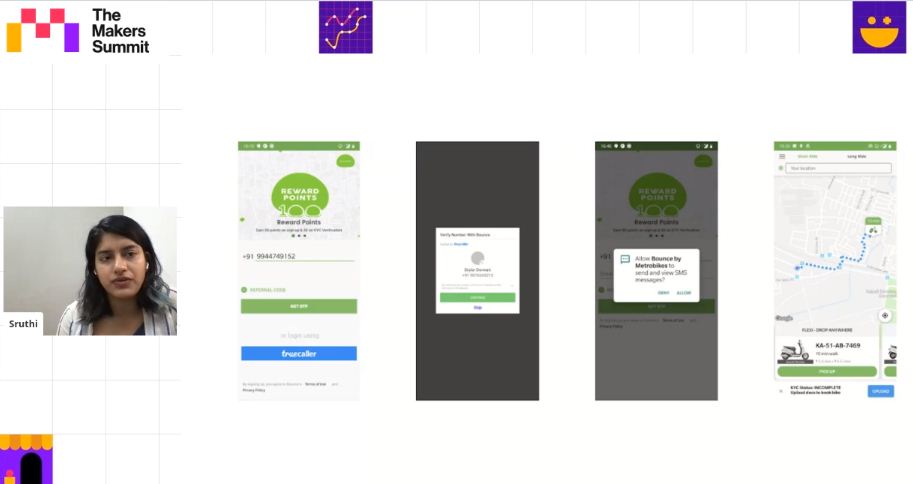SUMMARY
Sruthi Sivakumar spoke at the second masterclass of The Maker Circle, a precursor series to The Makers Summit 2021
Analysing the process, Sivakumar highlighted the role of defining design goals as the first step toward redesigning a successful product
She believes that user feedback is the most important mechanism to understand the flaws of the design
This article is part of Inc42 Plus’ upcoming conference — The Makers Summit India’s largest product conference scheduled for 12th-14th March, supported by Netcore, Amplitude and HPE. Click here to know more.
Changing a product’s design- no matter how minute- can be a tricky thing for startups. But every fine product that customers love to use has gone through innumerable iterations. And this was the topic of the second masterclass of The Maker Circle, a series of masterclasses by veteran product leaders hosted by Inc42 Plus as a prelude to The Maker Summit 2021. Sharing her own experience, Sruthi Sivakumar, head of design of shared mobility startup Bounce, unraveled the art of product redesigning and explained in detail how the smallest of changes can make a huge difference.
In the inaugural masterclass, renowned product leader and mentor Shesh Vasudevamurthy had explained strategies needed by product managers to excel in the technology driven development space.
Here are the key takeaways from Sivakumar’s masterclass session.
Defining Design Goals
“Redesigning is truly a great place to be. The product is live, some features have been implemented, there is data to learn from and users to talk to. With all great inputs available, you just have to do research and figure out the correct analysis,” said Sivakumar
In a dynamic market filled with competitors constantly trying to increase their market share, it is important to leverage any advantage a company has to stay ahead of the competition. Product redesigning presents a unique scope for that. Instead of creating an entirely new product because the existing one isn’t very successful-which is both cost intensive and time consuming-redesigning the product to address the aspects which aren’t working is the smarter solution many companies are moving towards. Redesigning, in essence, is to change the flaw in the design of a product to make it more engaging and efficient in terms of translation to revenue.
From Facebook to Amazon and from Salesforce to ebay, all the companies have gone through the redesigning process. It was done not just to give their products a new look, but to add new features, improve existing ones and align it with the changing company goals.
For Sivakumar, redesigning begins with research-qualitative and quantitative- understanding the business goals and aligning them with the users’ needs.
But understanding the brand or business goals might be a tricky thing, and this is why Sivakumar stresses upon the need to have clarity on it before taking up the task of product redesign. Because, If a business wants to improve user retention, then, redesigning has to be geared towards that, according to Sivakumar. The alignment is absolutely critical, otherwise it leads to designing elements that aren’t useful.

Sharing her own experience at Bounce, Sivakumar said that the primary goal of her organisation was to reach 100K rides to achieve accelerated growth and higher conversion rates.
During her research, she received user feedback over the color disparity between the application and the product. While the company’s scooters were bright red and yellow, the app that was used for bookings was green. As a result, users couldn’t find the right app on the app store, as they kept downloading the wrong apps with the same name.
This user feedback became the realisation point which made Sivakumar understand the importance of aligning the app with the brand for achieving consistency.
Bounce, at present, has 2000 electrical vehicles in its fleet and operates in 5 different cities. The startup, which began with an initial target of completing 100K successful rides now pulls off 90-100K rides a day, in Bengaluru alone.
Breaking It Down Is The Way To Go
Explaining the problems in redesigning, Sivakumar signified the importance of breaking down the redesign process. While a complete redesign could take months, the main purpose of breaking it down is to address the immediate issues which need a quick fix. The solution is to figure out what is broken the most and needs immediate fixing to drive results.
This process especially helps in early stage startups where the aim is to make a product market ready as soon as possible. A complete overhaul is very exhaustive as the team needs to research, find out what doesn’t fit and then sit with the engineering team to build it from scratch. And time is a luxury startups don’t have.

Taking us back to Bounce, Sivakumar told the audience about the challenge they faced in driving licence verification. The company’s goal was to increase user’s first successful ride within the first hour of signing up, which meant quick and successful verification of the driver’s licence.
In their older version, the user had to click on the upload section, take several images of the front and the back of the licence and a selfie, and then upload them all on the app. The images then would go to a call center that would then cross-check them to see if the selfie matched with the driver’s licence photo and if the licence was genuine. Then, it would manually get approved or rejected. This was a very long and tiring process.
Sivakumar, in her redesigning attempt, focussed on reducing the number of steps required to verify the licence. She and her team shifted the manual verification to an optical character recognition (OCR) verification, where a software analyses the image and helps the team know whether it is valid or not.
It drastically reduced the time taken for the verification process. Although, Sivakumar reminds that it was only a temporary solution as the long term fix was always to move towards a data platform to correctly evaluate the credentials. However, the short term fix was essential to resolve a big problem in the product design.
And this is how, Sivakumar believes, instead of redesigning the entire app, fixing a part of it while working towards permanent solutions is an essential character of the redesigning process.
Experimentation Is The Key
Sharing her own learning at Bounce, Sivakumar emphasised on the importance of experimentation. With the process of redesigning, it becomes imperative to constantly update the research, analyse the data to formulate a hypothesis and then run tests and see what works and what doesn’t. And at the same time, keeping track of the experiments is just as important to actually see the difference redesigning makes. In her own words, “Experiments give better results in a short span of time.”

Sivakumar presented another critical issue the company faced in order to reach their target of 100K rides. The problem was the high drop-off rates for the company between the time a user moved from the KYC page to actually booking a ride. Analysing the problem, Sivakumar found that the drop-offs were occurring in three parts. First was the SMS screen, where the app asked permission to access a user’s SMS box without giving context on the need for it. Second was the permission for a user’s email screen, which according to Sivakumar wasn’t needed. The third and the most critical part was the next application window, where the user was asked to pick their mode of pickup as either ‘drop zone’ or ‘anywhere’.
Users were concerned about the privacy of their data. After research and taking user feedback, she realised that the issue could be resolved only if the company made the process from the signup to ride-booking simpler and contextual.
The company decided to do away with the demand of the email screen of the user. The next step was to add Truecaller as a signup method for users to receive their number. The company also did away with the need for permission to use the user’s SMS inbox, until it was needed to send the OTP ( One Time Password), at which point the user would understand the reason behind the permission.
Thirdly, Sivakumar shared, the company got rid of the page asking the user to choose the mode of pickup and added it later on the ride booking screen where they could explain the difference between ‘drop zone’ and picking up from ‘anywhere’. With these small changes based on multiple iterations of experimentation, Bounce instantly saw a reduction of drop-off rate by 30%.
Finally, bringing an end to an exhilarating session, Sivakumar highlighted the role of users in the process of redesigning.
She said, “This biggest thing to remember is that you are not your user. So, no matter how good your insight is, it can’t be compared to a user’s feedback. Only a user can really tell what they think about your product. So, always talk to your users and always try to find out what kind of problems they face while interacting with the product. It is what forms the foundation of the framework of redesigning.”



























